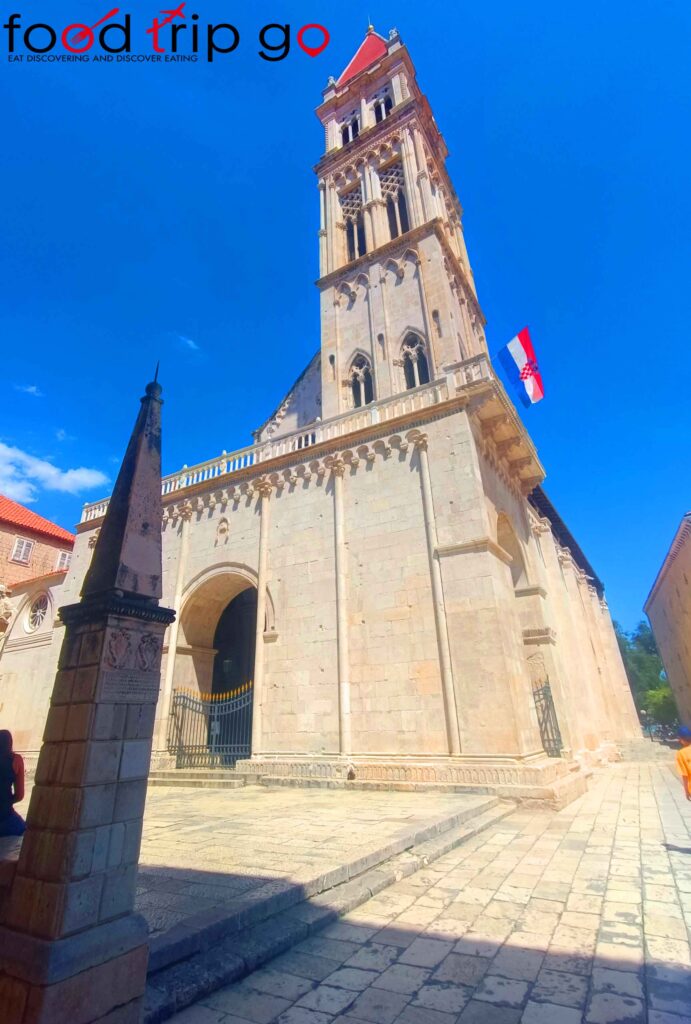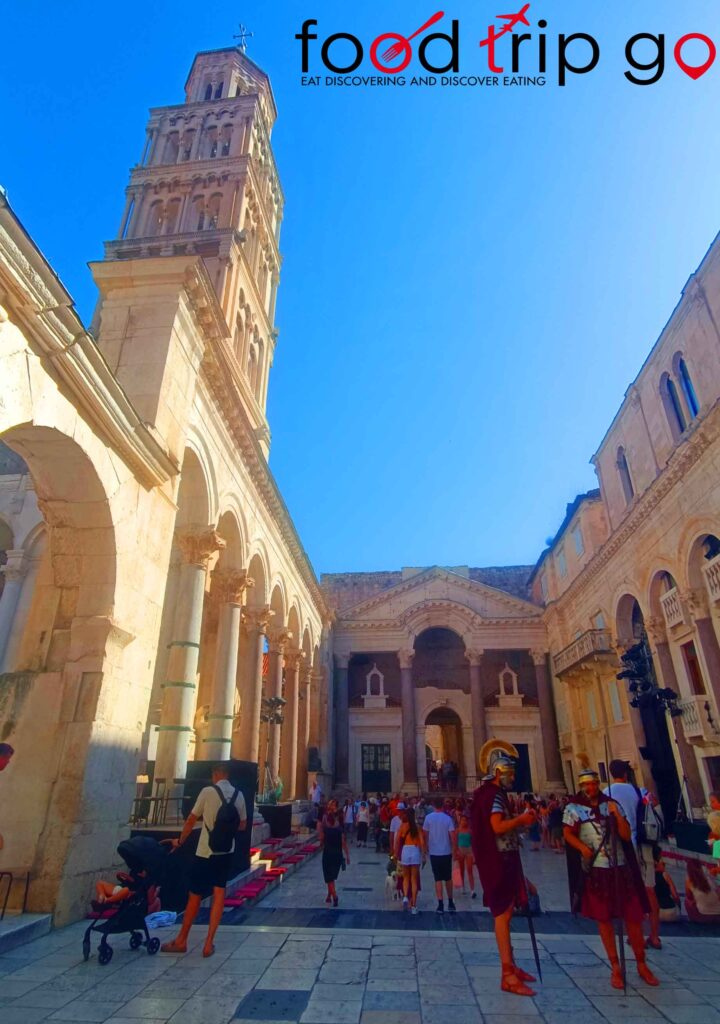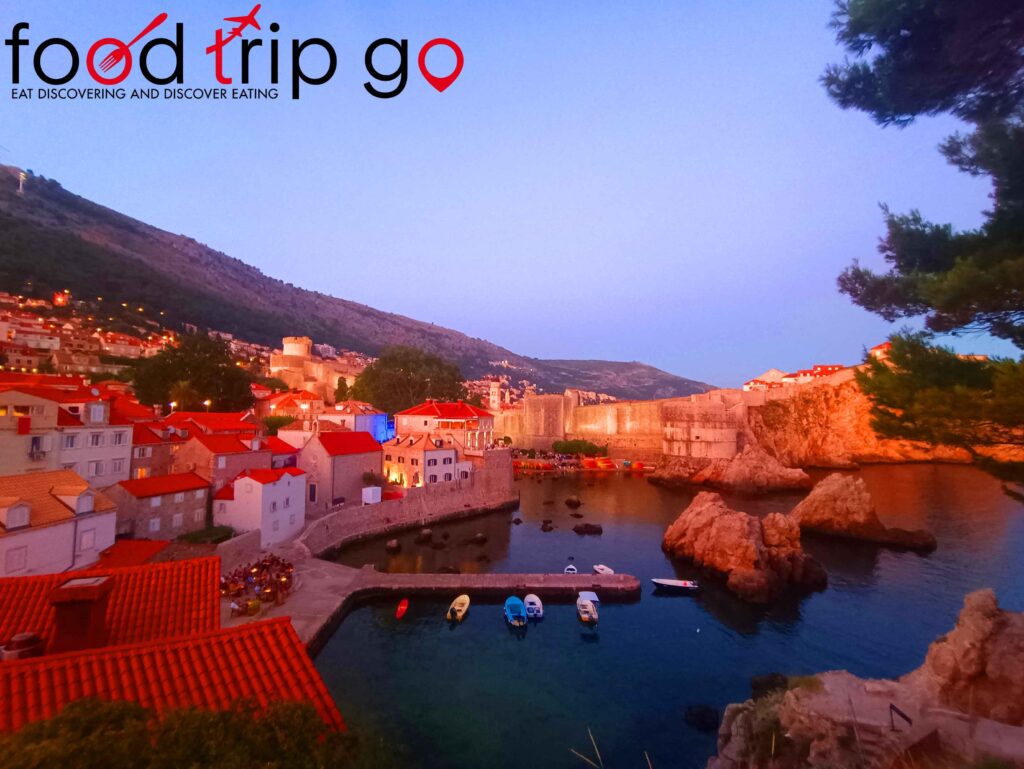An enchanting journey through Trogir, Split and Dubrovnik
Croatia is a land of extraordinary beauty, with its coastal cities and picturesque islands attracting travelers from all over the world. This pearl of Europe is characterized by clear traces of its Roman and Venetian past.
Trogir, a small town on the Adriatic coast, is a jewel of medieval architecture, with its historic center that has been declared a UNESCO World Heritage Site. Split, with the majestic Diocletian’s Palace, is a unique destination that combines antiquity and modernity. Dubrovnik, with its perfectly preserved medieval walls, is known as the “Pearl of the Adriatic” and is one of the most fascinating cities in the Mediterranean.
A journey through these Croatian cities offers the chance to explore centuries of history, admire breathtaking art and architecture, and enjoy Croatian cuisine that blends Mediterranean and continental flavors.
The typical dishes of coastal Croatia
Croatia offers a wide range of culinary delights that reflect its rich history and the cultural influences that have shaped its cuisine over the centuries. This country is the result of a harmonious fusion of Turkish, Hungarian, Greek, and Roman culinary traditions, expertly blended with local culinary roots. Along the coast, Croatian cuisine is dominated by the use of olive oil and spices such as rosemary, bay leaves, oregano, and sage, influenced by Greek, Roman, and Mediterranean traditions.
Crnirižot
Cuttlefish risotto is a Croatian culinary delicacy. The dish is distinguished by its distinctive black color, obtained from the ink of the cuttlefish. It often includes other seafood such as mussels and clams, creating a dish rich in the flavors of the sea.
Paprenjaci and Fritule
Paprenjaci are traditional Croatian cookies with a history dating back to the 16th century. These sweets are made with a combination of honey and black pepper. The fritule have a rounded shape and are made with ingredients such as flour, raisins, local schnapps, and lemon peel.
What to see in coastal Croatia
Trogir
Cathedral of St. Lawrence, Portal of Radovan, Chapel of Ivan Orsini
The Cathedral of St. Lawrence in Trogir is an outstanding testimony to Croatian Romanesque-Gothic architecture. This magnificent sacred building dates back to the 13th century and is famous for its impressive Radovan Portal, one of the most significant masterpieces of the Romanesque style in Croatia. The portal is adorned with detailed sculptures depicting biblical scenes and unique artistic representations. Inside the cathedral, the Orsini Chapel is another artistic treasure.

Cipiko Palace, Loggia, Central Square of Trogir, Ducal Palace
Cipiko Palace is a stately mansion dating back to the 15th century, distinguished by its Gothic Renaissance architecture. This historic palace is known for its elegantly decorated facade and interior frescoes telling stories of local nobility.
The Loggia of Trogir is located in the city’s main square. This historic building is famous for its elegant columns, fine architectural details and its importance as a social and political meeting place over the centuries.
Trogir‘s Ducal Palace was built in the 13th century and was once the residence of local rulers. It is famous for its ornate facade and majestic tower, which offers panoramic views of the city and the Adriatic Sea.
Promenade, St. Dominic’s Monastery, Kamerlengo Fortress, St. Mark’s Fortress
Trogir’s Promenade is a picturesque waterfront promenade that offers breathtaking views of the Adriatic Sea and the ancient city of Trogir. This charming avenue is a great place for a romantic evening stroll or to enjoy an outdoor coffee while getting lost in the coastal views. St. Dominic’s Monastery is an ancient religious complex dating back to the 13th century, known for its Gothic architecture and cloisters.
The Kamerlengo Fortress is an imposing defensive structure. Its history is rooted in the 15th century, when it was built by the Venetians to protect the city from maritime attacks. The name “Kamerlengo” comes from the title of the governor who administered the fortress. St. Mark’s Fortress is a defensive structure that dates back to the 15th century and is named after St. Mark, the patron saint of Venice. This fortress is an example of Venetian military architecture.
Split
Clock Tower, Silver Gate, Cathedral and St. Doimus Bell Tower, Diocletian Palace
The Split Clock Tower is an iconic structure located at the entrance to Diocletian’s Palace. This tower dates back to the 15th century and is famous for its astronomical clock, which is one of the oldest in Europe still in operation, and for its bells that ring regularly to announce the time to residents and visitors to the city.
The Silver Gate, also known as the Eastern Gate, is one of the four main entrances to Diocletian’s Palace. This majestic gate, built in the 4th century, is famous for its architectural beauty and the intricate decorations that adorn it, including high-reliefs and sculptures depicting mythological scenes.
The Cathedral and Bell Tower of St. Doimus represent a majestic religious structure located within Diocletian’s Palace. The cathedral, built in the 7th century, is famous for its fusion of architectural styles.
Diocletian’s Palace is a monumental structure built by the Roman Emperor Diocletian in the 4th century AD. This imposing imperial residence was originally designed as a retreat for the emperor at the end of his reign. The palace also served as a military and administrative base during the Roman period. Over the centuries, the palace underwent several transformations, becoming a city in its own right with a community settled within its walls. Today it is one of the best-preserved Roman archaeological sites in the world and a major tourist attraction in Croatia, listed as a UNESCO World Heritage Site.

Dubrovnik
Fort Lovrijenac, Onofrio Fountain, Placa Thoroughfare (Stradun)
Dubrovnik, also known as the “Pearl of the Adriatic,” is one of Croatia’s most charming coastal cities. This walled city is renowned for its well-preserved medieval architecture, with its high walls, ramparts and charming cobbled alleys. The town is also famous for its role in the TV series “Game of Thrones,” where it was used as the backdrop for the fictional King’s Landing. A walk along the city walls offers breathtaking views of the coast and the sea, making Dubrovnik a must-see for anyone visiting Croatia.
Fort Lovrijenac, located just outside the walls of Dubrovnik, is a majestic fortress overlooking the Adriatic Sea. It has a rich history and was a key point in the city’s defense against external threats in past centuries. The Onofrio Fountain is a fascinating architectural feature located in Dubrovnik’s Old Town. It features an elegant domed structure and numerous carved masks.
Placa Thoroughfare, also known as Stradun, is Dubrovnik’s main pedestrian street and the beating heart of the Old Town. With its polished marble pavements and charming facades of historic buildings, this street offers a unique experience to visitors strolling through its boutiques, cafes, and restaurants.

Exploring Croatia: coastal beauty, history and gastronomic delights
Croatia is a jewel of Europe that offers an extraordinary experience for travelers seeking natural beauty, fascinating history and delicious cuisine. Coastal cities such as Trogir, Split and Dubrovnik tell millennia-old stories through their breathtaking architecture, evidence of the Roman and Venetian past. Croatian
cuisine, influenced by different cultures, offers a unique blend of Mediterranean and continental flavors, with dishes such as Crnirižot and Paprenjaci delighting the palate.
Discover more itineraries in Croatia
CROATIA: COASTAL TREASURES AMONG HISTORY, ART AND MEDITERRANEAN FLAVORS
INLAND CROATIA: NATURAL BEAUTY AND UNIQUE GASTRONOMY
CROATIA ROAD TRIP: A JOURNEY THROUGH HISTORY, NATURE AND THE SEA